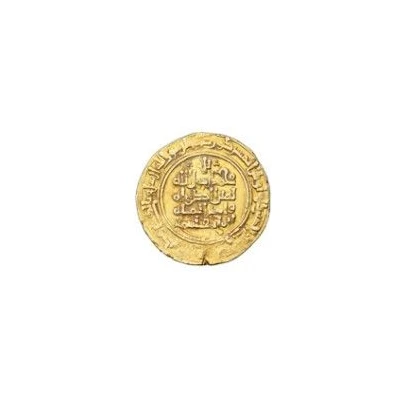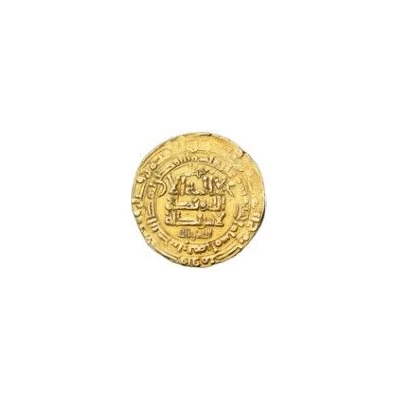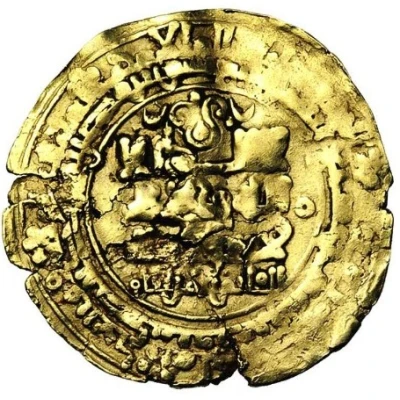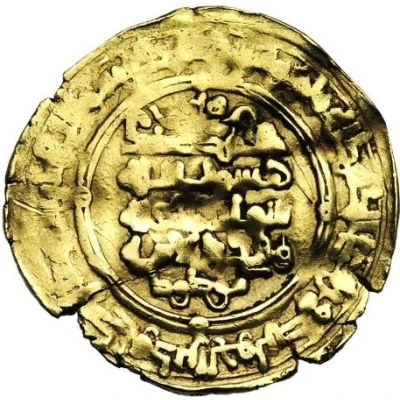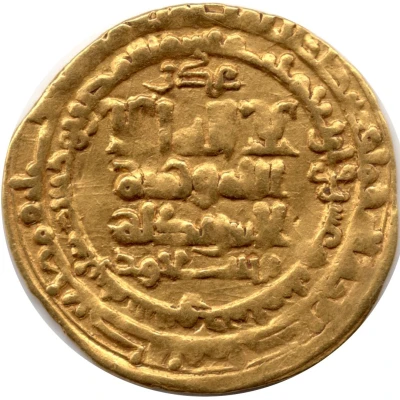
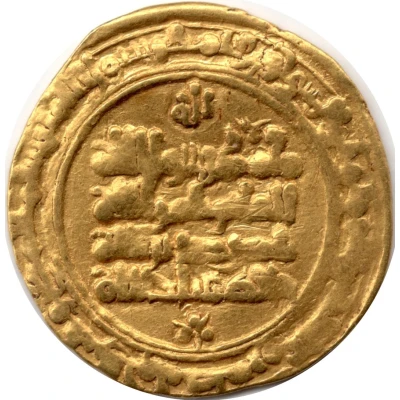

© Blake S
Dinar - Mas'ud I Nishapur
| Gold | 4.04 g | 23 mm |
| Issuer | Ghaznavid dynasty |
|---|---|
| Sultan | Mas'ud I (1030-1041) |
| Type | Standard circulation coin |
| Years | 421-429 (1030-1040) |
| Calendar | Islamic (Hijri) |
| Value | Dinar (1) |
| Currency | Dinar (977-1186) |
| Composition | Gold |
| Weight | 4.04 g |
| Diameter | 23 mm |
| Thickness | 0.8 mm |
| Shape | Round (irregular) |
| Technique | Hammered |
| Orientation | Variable alignment ↺ |
| Demonetized | Yes |
| Updated | 2024-10-05 |
| Numista | N#369465 |
|---|---|
| Rarity index | 95% |
Reverse
Kufic inscription, enclosed in circle. One marginal legend. Sometimes with flower decoration at 6 o'clock and/or naming caliph.
Script: Arabic (kufic)
Lettering:
محمد رسول الله
ناصر دين الله مسعود
Translation:
Muhammad is the Messenger of God
Nasir Din Allah Mas'ud
Edge
Plain
Comment
Mas'ud I of Ghazni reigned from 1030 to 1040AD (421-432H) as sultan of the Ghaznavid Empire. He usurped the throne from his younger twin brother Muhammad, who had been the designated heir chosen by their father, the well known Mahmud of Ghazni. Mas'ud would lose much of the western part of the empire to the Seljuqs during his reign, resulting in a rebellion and his gruesome demise.The mint cities of Nishapur and Herat were lost to the Seljqus in 1040AD/432H. Most subsequent Ghaznavid dinars were then struck in Ghazna in debased gold (pale-gold). Source page 180
Interesting fact
One interesting fact about the Standard circulation coin Dinar - Mas'ud I (Nishapur) 421-429 (1030-1040) from Ghaznavid dynasty made of Gold weighing 4.04 g is that it features an inscription in Arabic that translates to "Mas'ud, the just king, may God perpetuate his reign" on one side, and an image of a lion on the other. This coin was used during the reign of Mas'ud I, who was known for his military campaigns and administrative reforms, and it reflects the cultural and artistic achievements of the Ghaznavid dynasty, which was a major power in the region during the 10th and 11th centuries.
